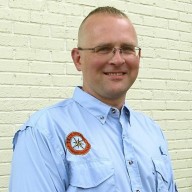Survivor v. Survivalist: What’s the Difference?
Going into it’s eleventh day, the manhunt continues for Eric Frein, the self-styled survivalist who ambushed two Pennsylvania State Troopers, killing one and injuring another, then apparently slipped into the mountains of Northeastern Pennsylvania to escape. In addition to the swarm of state and federal law enforcement officers intensely searching for Frein, there is a swarm of media in the vicinity intensely searching for any information that may help the general public better understand, not just the mind of this killer, but for how long he may be able to avoid arrest. As a result, my telephone has been repeatedly ringing almost everyday for a week as journalists from across the state and country ask for my “expert” opinion about the manhunt, in particular, what skills it takes a “survivalist” to successfully hide and evade. I detest the term survivalist.
Before I explain, though, let me make two points clear, just as I have in each of my interviews. First, please don’t refer to me as a wilderness survival expert. While I may know some things about wilderness survival, I am just a student like anyone else so I am continually learning about the subject. Second, I won’t comment directly about the Frein case as I am in no way associated with it and know nothing more than anyone else (probably much less). Hence, I frame my thoughts only around survival.
Anyway, while it may seem unduly picky, as I have explained to each journalist, in my opinion, there is a huge difference between a survivalist and a survivor. The former, based on my own observations, tends to be continually preparing for some abstract catastrophe (like urban riots, a religious end of days, an overreaching federal government, or an invasion by the United Nations in black helicopters) and places an undue emphasis on stockpiling supplies and weapons, without attempting to acquire any specific knowledge or applicable skill. The latter group, by contrast, tends to prepare for risks that are more reasonably foreseen (perhaps due to their chosen professional or recreational activity, or because they live in a region prone to natural disaster) by acquiring, not just applicable supplies and gear, but skills, like first-aid (or if they own a gun, by actually learning how to properly use it in a mix of circumstances and stressors).
The biggest difference between these two groups, though, is that a survivor not only wants to protect his or herself and family when the worst occurs (which is understandable), but he or she is also prepared to help others if possible. After all, the way I see it, the best way to keep calm as we try to rise above our pain and suffering and, thereby, survive, is to help someone else through their pain and suffering.
To survive selfishly makes one no better than certain animals.
Just look now to the mountains of Northeastern Pennsylvania.
——————————
To read and watch a few of Erik’s most recent interviews, check out these links: Associated Press, WTAE, KDKA, and the Philadelphia Inquirer.

